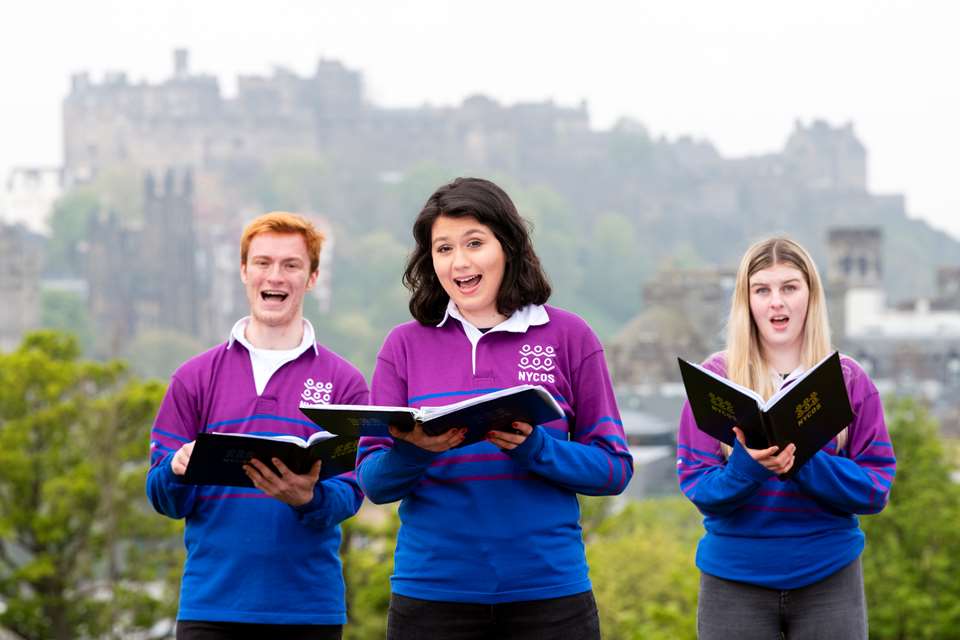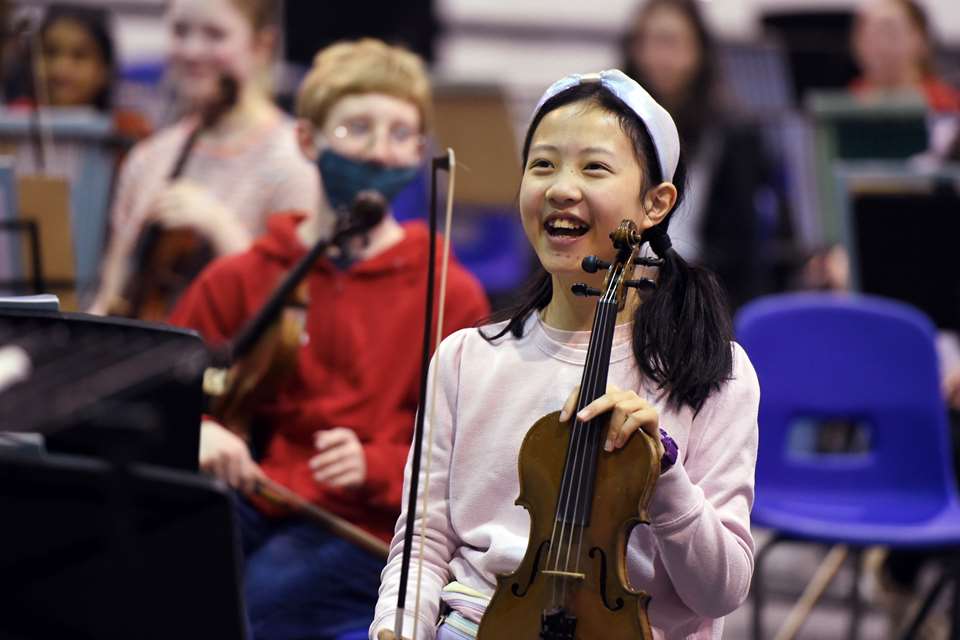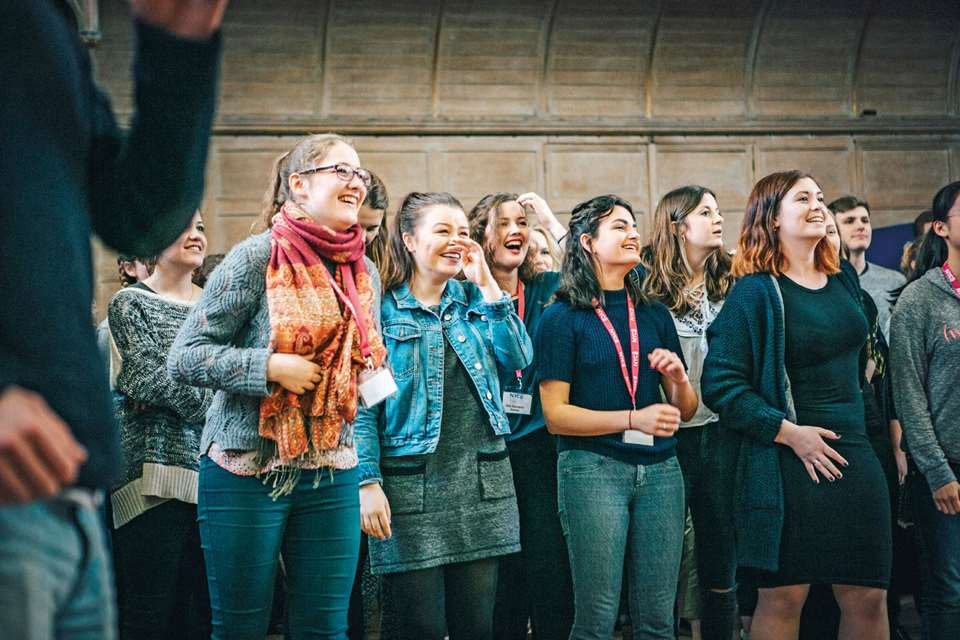Great Scott! The National Youth Choir of Scotland's rise to fame
David Kettle
Thursday, June 1, 2023
Now one of the world’s great youth choirs, the National Youth Choir of Scotland came from humble beginnings. David Kettle investigates.

Ian Georgeson
At the time I was looking at it, there were only three Scots in the National Youth Choir of Great Britain. And it struck me that there must be more young people in Scotland who can sing. So, we set up our own choir here.’
That’s Christopher Bell looking back to the mid-1990s and remembering the origins of the National Youth Choir of Scotland (NYCOS), which he co-founded in 1996, and where he’s now artistic director. It’s come a long way since then. NYCOS is now recognised as one of the world’s great youth choirs. It’s given high-profile performances at the Edinburgh International Festival and the BBC Proms, even at New York’s Carnegie Hall, and it’s been specifically asked for by big-name conductors including Edward Gardner and Sir John Eliot Gardiner. Arguably just as important as its performing achievements, however, is what goes on behind the scenes – whether that’s teacher training, an abundance of singing resources, or an ever-increasing range of publications.
Humble beginnings
There’s no doubting that NYCOS in 2023 is a large and highly influential institution, but it grew from humble beginnings. Before his realisation about Scottish youngsters in the UK-wide National Youth Choir, Bell had been involved in several choirs across Scotland from the late 1980s, after an unexpected immersion in choral conducting while a masters student at the University of Edinburgh. Following discussions in 1995 with the National Youth Orchestra of Scotland, the Royal Scottish Academy of Music and Drama and other Scottish arts organisations, there was general agreement that a youth choir would be a good thing. ‘I thought they’d go ahead and set something up, but there was a point where they just looked at me and I thought: “Oh, you want me to do it.”’
And so he did, with the help of colleague Lucinda Geoghegan (now NYCOS’s creative learning director). They first put their toes in the water with regional choirs in Edinburgh and West Lothian – ‘and the whole thing just spiralled from there, really,’ remembers Geoghegan. Regional choirs grew over subsequent years (there are now 14, from Edinburgh, Glasgow and the central belt up to Inverness and Lewis), leading to Scotland-wide choirs. ‘In a way we’ve created a singing culture’, explains Bell. ‘People in the regional choirs know that there’s the national choir, the National Youth Choir of Scotland, and in 2002 we added a National Boys Choir, then in 2007 a National Girls Choir.’ Just last year came NYCOS’s latest ensemble addition: the NYCOS Chamber Choir is a select gathering of slightly older singers (aged 18 to 25) with the skills to tackle more challenging repertoire.
The success of the Kodály method
A large part of NYCOS’s success, Bell and Geoghegan feel, has been down to its way of teaching: the Kodály method. It was there as a pillar of NYCOS’s educational approach right from the start, as Geoghegan remembers. ‘It was fundamentally important, both to me and Christopher. Zoltán Kodály himself said that if he had to summarise his methodology, it would be in the form of a national choral organisation – it’s about musicianship through singing. And for me, it’s about teaching music musically, rather than intellectually.’
Geoghegan refers to the fundamental ‘sound before symbol’ paradigm. ‘It’s about a child absorbing the songs before they read them. We learn the sound almost subconsciously, before we present it in any kind of notation. Even then it might be using pictures: perhaps one sound’s higher and another sound is lower, which we can represent visually.’
This focus on Kodály’s methods underpins where NYCOS is now, not only in the public-facing pyramid structure of its performing groups, but also in the support it offers to music teachers, in online Kodály courses, and in online resources and print publications. And all those latter activities fall directly under Geoghegan’s remit. ‘I oversee the musicianship and the training of staff who go out into the regional NYCOS choirs,’ she explains. ‘Broader training is also a huge part of what I do, whether that’s general classroom teachers, specialist music teachers, nursery teachers, almost anybody who wants to come and be trained.’
Organic development
The million-dollar question, however, is how NYCOS grew from its modest beginnings to being the world-renowned organisation it is today. Part of the answer, Geoghegan feels, is organic development, and responding to developing needs. ‘The choir programme has built up over the years, and the training has grown: I used to do an odd afternoon of teacher training, but when people see results, they want more.’
Geoghegan also points to new demands from nonspecialist teachers called upon to cover music. ‘In a lot of authorities I work with there are no music specialists. I’m very against the idea of buying in a package for a nonspecialist teacher. Why not give the general teacher some musical skills? That’s one area that’s particularly grown in our training: we’re giving general teachers fundamental skills to be able to teach music.’
There’s no doubting, either, that Bell has been and remains the driving force behind the organisation – and conversely, that it’s an organisation that remains very close to his heart. ‘I’ve learnt a lot myself over the years,’ he admits. ‘I have an instinct for singing, but I’m not a trained singer myself. But I’ve learnt from the singing teachers who attend our courses, and we work our singers hard and they give us their best, too. We get a lot of loyalty out of the people we work with, and it’s something we’re all still passionate about.’ What is it that continues to drive him? ‘It’s about the sheer pleasure of performance. I really want the audience who hears NYCOS to think: that choir’s good. Then I know I did my job.’ Courtesy NYCOS
Courtesy NYCOS
Christopher Bell, artistic director of NYCOS
A serious attitude
That passion, and also those high expectations, are confirmed by Stephanie Bell (no relation to Christopher). She currently sings in the elite NYCOS Chamber Choir, but began as an 11-year-old in the Renfrewshire regional choir. ‘Then I moved into the National Girls Choir, the NYCOS Training Choir, then the National Youth Choir, before the Chamber Choir.’
As someone who’s been through almost the entire NYCOS choir system, how does Stephanie account for the organisation’s success? She points to fundamental issues of seriousness and attitude. ‘As a young singer, you’re there to have fun, but you’re also there to learn. A lot of the rehearsals are very intense, and you can get extremely tired. The staff are on hand with juice and biscuits, so you’re well fuelled. There are great activities for getting to know the other singers – I’ve made some fantastic friends there who have stayed with me through my life. But the expectation is that when you’re in a rehearsal, you’re at the top of your game. It’s not the military by any stretch of the imagination, but there’s a way of working that’s extremely efficient, and it gets results. Clearly it’s a reason why people keep coming back, because they love what it gets from them.’
Providing a pathway
Stephanie has now come full circle as a NYCOS teacher herself in the Renfrewshire Regional Choir. ‘I’m a musicianship teacher, and I teach children from P4 all the way up to S6, with about ten in each class,’ she explains. Even that, she explains, was part of NYCOS’s underlying philosophy, embedded in its own training. ‘While I was still in the Renfrewshire Regional Choir myself, they introduced a post to join the team of staff and get P3 children into the choir for four weeks of taster sessions to see if they enjoyed it, so that they could start at the beginning of P4. It ended up being my first job.’
Understandably, Christopher and Geoghegan are both proud that NYCOS-trained singers are themselves returning to the organisation – whether as teachers or as vocal soloists. Later this summer, for example, NYCOS alumni Catriona Morison and Paul Grant join the choir in Duruflé’s Requiem at an Edinburgh International Festival performance. ‘I’ve spoken to some of them,’ says Geoghegan, ‘and I’ve said: we’re delighted to have you back, but what brings you back? And they’ve said: we feel passionate about this gift that we’ve been given, and we want to help other children have the same gift.’
It’s clearly an intense experience with high expectations, but one that’s warmly supported and that offers a clear pathway for those young singers who choose to follow it. Underlying it all, to return to Christopher’s opening thoughts, is a belief that there are young people in Scotland who can indeed sing. ‘Because if music isn’t for our children,’ says Geoghegan, ‘then why are we doing what we’re doing?’




